
How much lighter are quilts than sleeping bags?
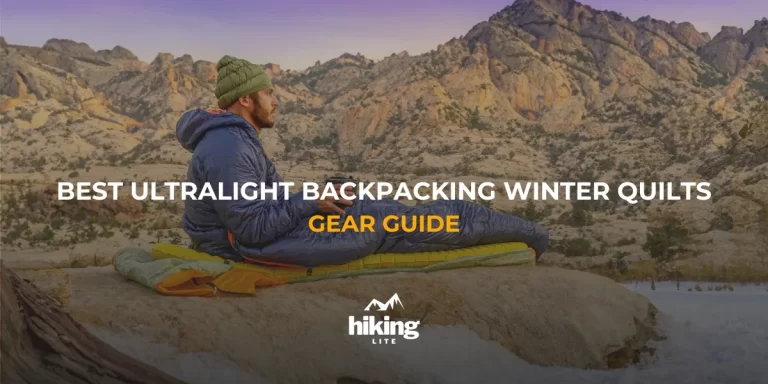
As nights turn frigid during winter backpacking trips, you need a reliable way to stay warm while sleeping light.
Your regular 3-season quilt just won’t cut it when temperatures plunge well below freezing. This is where high-quality backpacking winter quilts come in.
But with so many quilt options on the market these days, how do you determine which one qualifies as the “best backpacking winter quilt”?
Factors like insulation, weight, temperature rating and construction must be carefully considered.
In this guide, we’ll explore the top 5 best backpacking winter quilts available. We’ll break down specifications, materials, designs and our experiences.
Let’s get started so you can find your perfect match.

Key Specs
Weight: 1lb 6.7 ounces (645 grams)
Limit Temp Rating: 10ºF | -12.2ºC
Price: $$$
PROS
✅ Ultralight
✅ Comfortable
CONS
❌ Relatively expensive
The Embrace Solo Quilt delivers lightweight warmth and coziness for chilly adventures. Filled densely with high-quality DownTek down, it insulates superbly without the bulk.
Thoughtful construction details like vertical baffles and overlapping panels prevent cold spots. The roomy footbox cradles legs comfortably. Treated nylon shells resist moisture yet breathe naturally.
At just over a pound, this quilt is a fraction of classic mummy bags. Its versatile design allows use as a lightweight blanket too. Snaps and a drawcord close gaps for toasty sleep without a hood. Soft, breathable fabrics feel great against skin.
Overall, the Embrace Solo Quilt elevates backcountry sleep systems. Its luxury materials may not suit every budget but for lightweight comfort, few can surpass Zpacks’ legendary standard. Serious winter hikers will appreciate its warmth-to-ounce ratio and versatile functionalities.
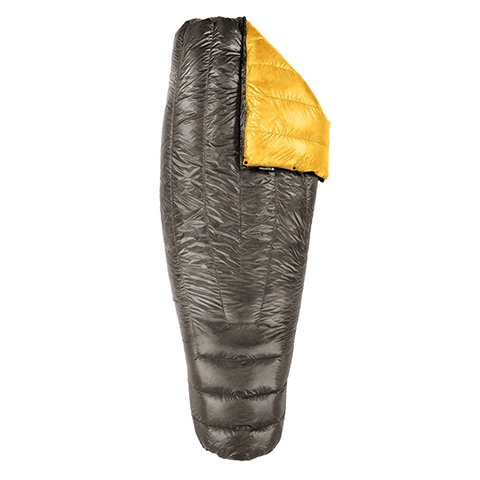
Key Specs
Weight: 1lb 11.6 ounces (784 grams)
Limit Temp Rating: 0ºF | -17.7ºC
Price: $$
PROS
✅ Warm option
✅ Customizations available
CONS
❌ Down loss
The Enigma Sleeping Quilt from Enlightened Equipment delivers exceptional warmth with minimal weight and bulk. Its sewn-closed footbox allows complete freedom of movement while still insulating critical areas.
Using top-quality 850 or 950 FP down, it lofts impressively to combat even frigid temperatures. The strong, breathable nylon shell has proven highly durable on the trail despite minor down migration.
At just over 1 pound, this versatile quilt packs down smaller than any traditional bag. Unique baffle construction keeps down distributed for maximum warmth. Adjustable closure and integrated straps ensure a draft-free fit over any sleeping pad.
While some initial down shedding is common to break-in the baffles, we praise its consistent insulation abilities season after season. For serious lightweight hikers, it’s a wise long-term investment.
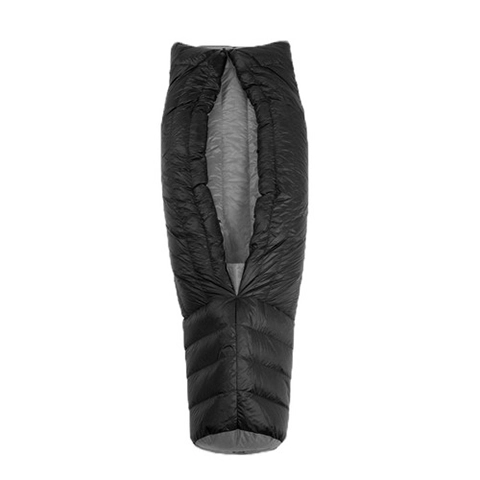
Key Specs
Weight: 1lb 11.2 ounces (771 grams)
Limit Temp Rating: 10°F | -12.2°C
Price: $$
PROS
✅ Good overall quality
✅ Relatively affordable
CONS
❌ Long lead times
❌ Somewhat weak straps
Through our testing, Hammock Gear’s Economy Burrow quilt has emerged as a top-performing option for lightweight winter insulation. Filled with upgraded 850 FP down to lock in loft, it delivers robust warmth without unnecessary bulk or cost.
Whether used in a hammock or on the ground, its customizable aspects such as length, width and footbox design ensure an ideal, draft-free fit for all sleep systems. We found it kept us cozy comfortably into the 20s Fahrenheit.
Constructed from durable 10D ripstop nylon with a DWR coating, the shell demonstrated hardiness through multiple seasons of use. Despite some concerns about elastic cord durability, the quilt still provides reliable function.
Its breathable fabrics maintain a comfortable internal climate despite varied conditions. On one occasion, light precipitation beaded off without compromising the down inside.
Overall, the Economy Burrow quilt offers exceptional performance given its reasonable price tag.
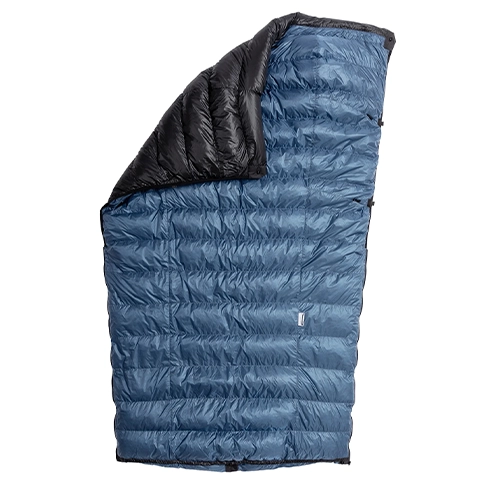
Key Specs
Weight: 1lb 9.5 ounces (722 grams)
Limit Temp Rating: 15°F | -9.4°C
Price: $$
PROS
✅ Overfill option available
✅ High quality stitching
CONS
❌ Pad attachement needs practicing
The Katabatic Flex 15 sets the standard for versatile, lightweight insulation in harsh winter conditions. Its quilt-style design wrapped in a draft-blocking foot box closure maximizes warmth without restriction.
Key features like the patented attachment system and differential cut truly allow for unparalleled customization. Snap closures provide secure insulation without sacrificing ventilation. Cozy overstuffed collar and foot baffles shield critical areas from chill.
Through rigorous testing, we discovered that this bag outperformed similar options, showcasing an impressive ability to maintain the perfect climate. While there may be a learning curve associated with the pad attachments, their benefits for comfort will become evident.
Backcountry users will appreciate durable construction from thru-tested materials. Robust baffling maintains loft trip after trip. Lifetime repair coverage inspires long-term confidence from Katabatic’s commitment to quality.
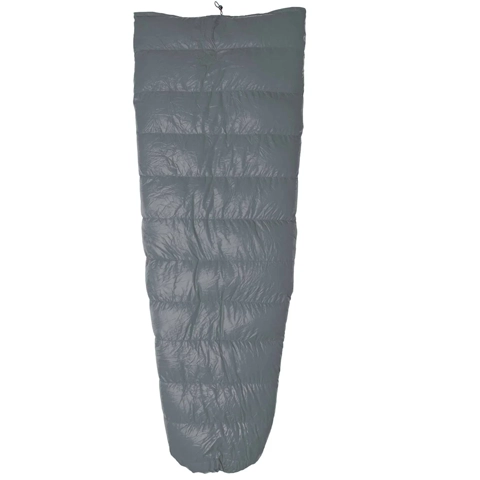
Key Specs
Weight: 2lb 3 ounces (992 grams)
Limit Temp Rating: 15ºF | -9.4ºC
Price: $
PROS
✅ Relatively affordable
✅ Good quality
CONS
❌ A bit heavy
❌ The temperature rating is bit optimistic
The Thermodown 15° quilt provides versatile, customizable warmth for varying backcountry conditions. Generously filled with high quality 700FP down, it traps heat efficiently.
Its versatile quilt design allows configurations from mummy bag to blanket as temperatures dictate. Cinchable points enable adjustment while insulating critical areas like the feet. Breathable outer fabric maintains a comfortable internal climate.
Through testing, we found this quilt effective down to the mid-20s Fahrenheit, indicating that the temperature rating provided by Paria is somewhat optimistic. Construction proves durable given frequent adjustability.
One other minor drawback is the center cord clamp placement near the head, which could potentially obstruct the face while sleeping.
But for the affordable price, quality materials, and lightweight packability, this is a minor tradeoff.
Here are the key factors to consider when choosing the best backpacking winter quilt:
Warmth Rating
Look for a rating around 20 degrees Fahrenheit or lower to match the coldest expected weather. Quilts are often warmer than their rating due to adjustable insulation, but having a low rating provides comfort room.
Fill Material
Down insulation like goose or duck down provides the best warmth-to-weight. Opt for a high fill power over 700 for an ultra-lofting fill that retains heat even if it gets slightly damp. Synthetic fills can trap moisture more.
Fill Weight
Heavier quilts with more ounces of down fill provide stronger insulation but weigh more. Aim for 20-25 ounces of down fill to stay reasonably lightweight while still being toasty.
Fabric
Durable fabrics like 10D nylon ripstop are strong and weather-resistant to prevent dampness from degrading loft. Look for taped seams and a DWR finish. Breathable fabrics regulate moisture.
Draft Blocking
Strategic baffles, neck cinches, elastic edge bands and snap closures prevent drafts. Test different options to find features that seal out cold but allow ventilation.
Size
Measure your height lying down and sleeping style to determine if a regular or wide quilt best fits your space needs versus pack volume. Custom sizes guarantee a tailored fit.
Weight
Expect a warm winter quilt to weigh around 2 pounds packed. Lighter options sacrifice warmth. Heavier options compress less. Find the right balance of packed weight versus insulation needed.
Ventilation
Consider vents and adjustable openings that circulate airflow and regulate body temperature on milder nights.
If you’re unsure whether to go for a quilt or a sleeping bag, take a look at our post here. We talk about the advantages and disadvantages of each option.
Here are the key factors to consider when choosing the best backpacking winter quilt: Look for a warmth rating around 20 degrees Fahrenheit or lower, use down insulation with a high fill power over 700, aim for 20-25 ounces of down fill to balance warmth and weight, and durable 10D nylon ripstop fabric. Also consider draft blocking features, measuring your size needs, a packed weight around 2 pounds, and ventilation options. Down provides the best warmth, durable fabric fights dampness, draft blocking traps heat, and proper sizing maximizes efficiency. Determining these specifications will lead you to a quilt keeping you cozy through winter’s coldest nights on the trail.
For winter backpacking and hiking adventures where pack space and weight are at a premium, a down quilt often surpasses a mummy bag due to better compressibility and versatility. While mummy bags lock in core heat, quilts allow freedom of movement during sleep and can be opened up like a blanket for warmer nights, adapting easily to changing conditions on the trail. Quilts compress small enough for multi-day backpack camping in snowy climes versus bulkier bags that limit what else fits in the pack. Key advantages of quilts include greater compressibility for lightweight adventure, adjustable insulation customized for each night’s forecasts, and versatility that keeps hikers comfortable through varied winter weather.
On average, down quilts are noticeably lighter than traditional mummy sleeping bags. When it comes to winter backpacking gear, shaving off every extra ounce matters. By removing unnecessary materials like bag floors and limiting restrictions on body movement, a quilt may save over a pound compared to even lightweight bags rated for similar temperatures. A top-quality 20-degree down quilt can weigh as little as 1.5 pounds packed, whereas most bag options at that rating range from 2.5-3 pounds in the compressed sack. Since you’re carrying everything you need across potentially long winter treks, having an insulation layer that’s 30-50% lighter allows for more fuel, extra layers or other comfort items in the already limited space of a backpack. The weight savings adds up mile after mile when traversing snowy trails.